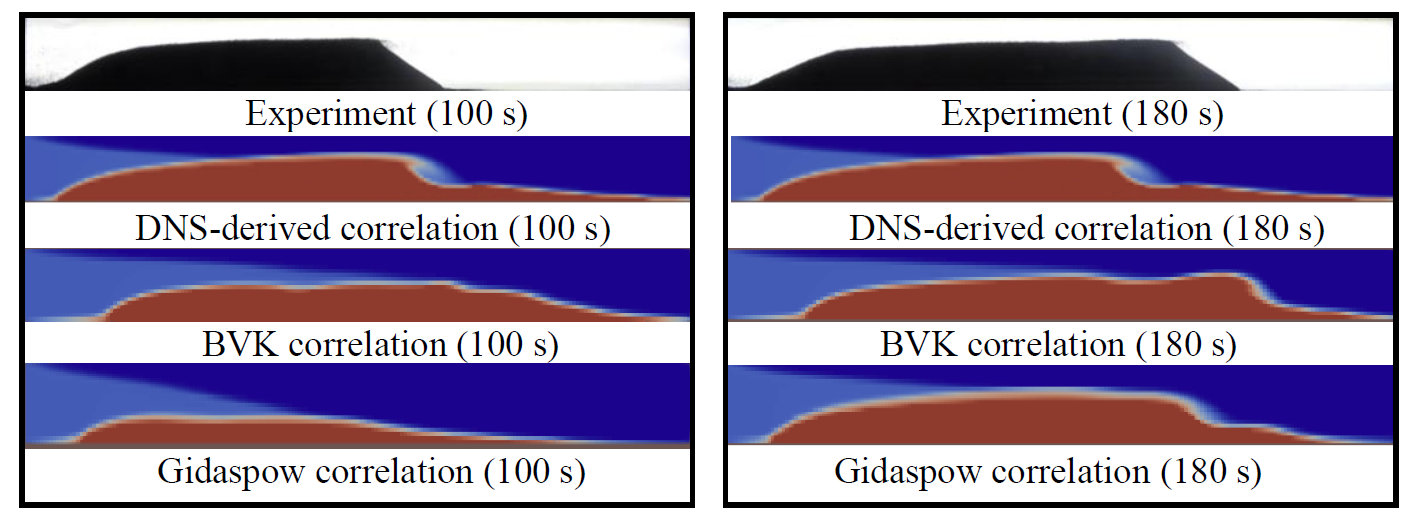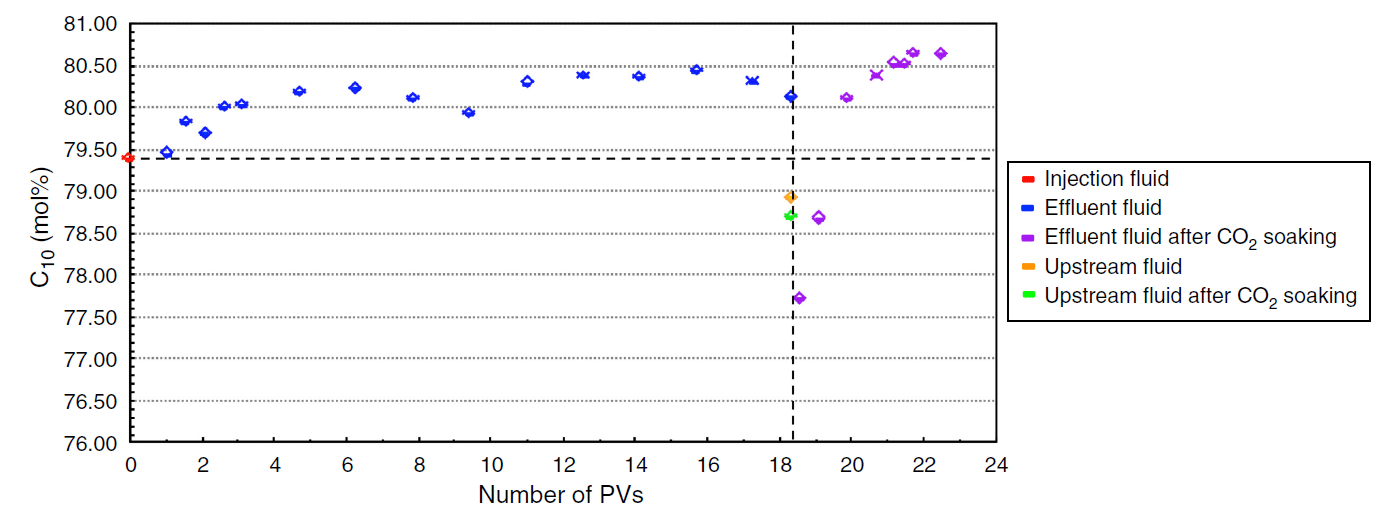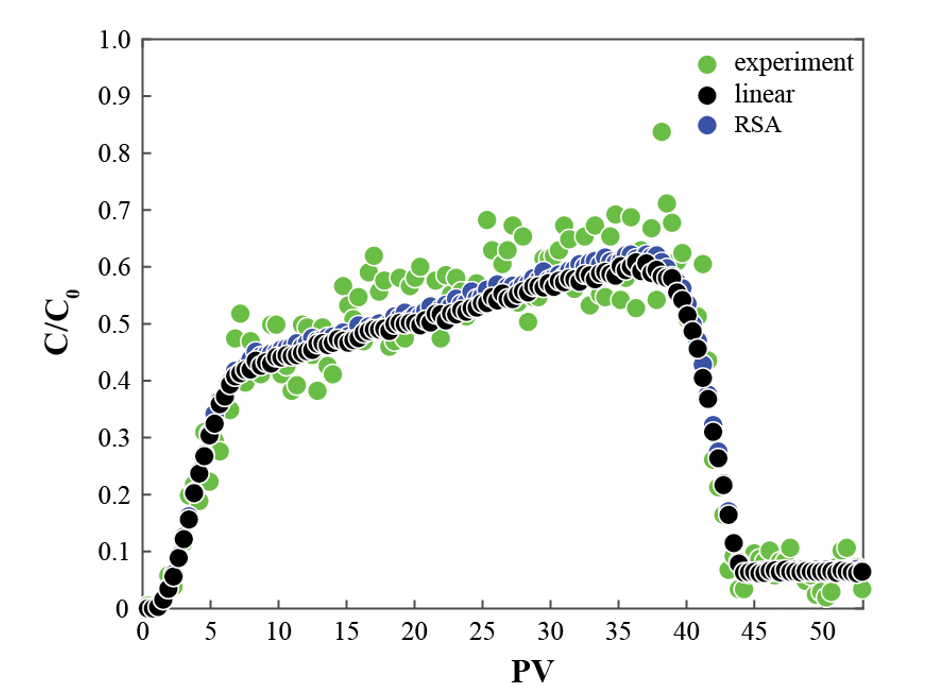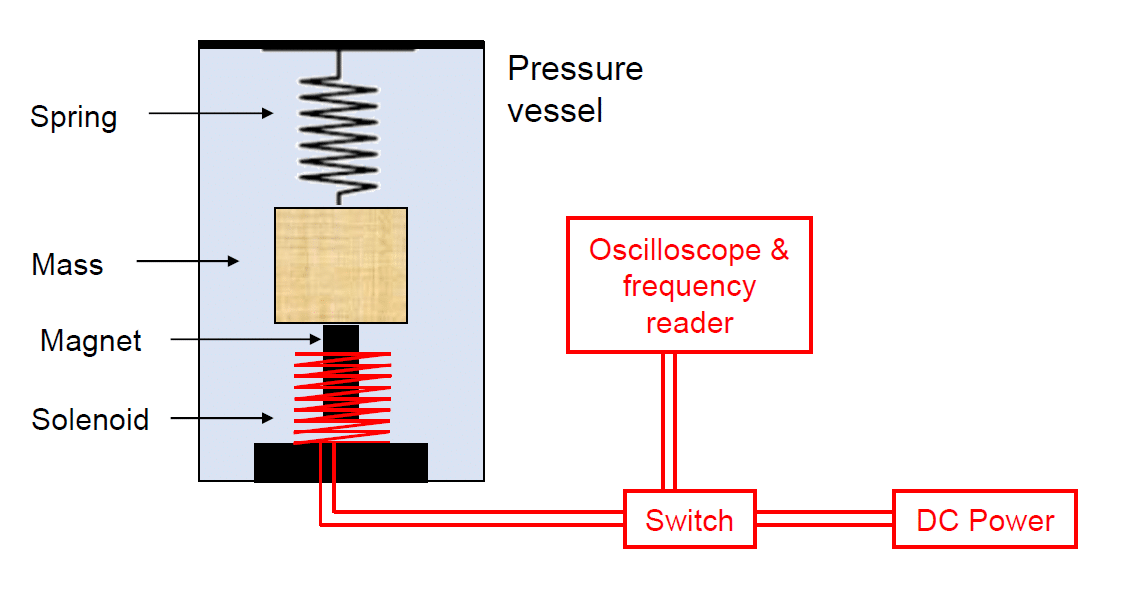Research
Theoretical models for particulate flows often treat particles and fluid as two interpenetrating continua. In such models, particle-fluid interactions are coarse-grained to the continuum level, giving rise to constitutive models that are, nowadays, often obtained through detailed numerical solutions of the Navier-Stokes equation and particles’ equations of motion. Why accurate constitutive models are important? Without them, predictions of continuum-scale models cannot be quantitative. In simulations of proppant transport, the use of an accurate sedimentation correlation can significantly improve the accuracy of prediction. Using detailed simulations to evaluate / improve constitutive models for particulate flows is a significant research direction of our group. A current focus of our studies is proppant transport.

Figure – Simulation of proppant transport in a vertical fracture with different drag laws.
Our studies on porous media focus on pore- and core-scale phenomena. The objective of these studies is to improve existing flow and transport models (e.g. relative permeability) for continuum-scale simulations. In pore-scale studies, we use a range of computational and experimental tools. We conduct direct numerical simulations of fluid flow and transport through porous media using lattice Boltzmann methods and random-walk particle tracking. We build model structures of porous media using a Voronoi-diagram based method. Experimentally, we use transparent microfluidic devices to visualize flow and transport on the scale of micrometers, observations made from which are used to direct or calibrate pore-scale simulations. High-performance computing and microfluidics reaching the size of centimeter give us ability to upscale flow and transport to the core level. These results are compared to real core experiments for full validation.
Movie – Dynamics of water-oil displacement in a microfluidic porous medium without surfactant.
In pores of “conventional” sizes (above O(100) nm), transport of fluids is largely hydrodynamic. In pores of smaller sizes, which are abundant in tight oil and gas reservoirs termed “unconventional”, surface effects can moderate Navier-Stokes hydrodynamics and, depending on pore size and fluid-surface interactions, can even become dominant. Transports that cannot be explained and modeled by Navier-Stokes hydrodynamics alone include slippage of gases and chromatographical separation of oils. These phenomena are critical for reservoir-scale movements of hydrocarbons but little is known on how to model them. Specific rock-fluid interactions and their influences on transport must be measured and modeled. We approach these problems by using a combination of (mini)core experiments and pore-scale molecular and hydrodynamic simulations.

Figure – Filtration of C10/C17 binary mixture through a Niobrara shale sample and effect of CO2 soaking, from Zhu et al. 2020.
Transport of soluble (i.e. stable dispersion) macromolecules or colloid-size particles, such as hydrated polymer coils, silica-alumina clay particles, and asphaltene aggregates, through porous media is often complicated by interactions between macromolecules / colloids and surfaces of porous media. These interactions are electrostatic in nature and can be, as a leading approximation, modeled as a combination of monopole (i.e. charge) and dipole (i.e. van der Waals) potentials. Particle-tracking method is an efficient way to simulate transport of such “particulates” in porous media. After interactions between these particles and surfaces of porous media under specific liquid environment (oil or water) are correctly measured / modeled, particle-tracking simulator can reproduce experimentally obtained breakthrough curves.

Figure – Breakthrough curve of colloidal nanoparticles through a packed bed that contains a small fraction of collectors – comparison between microfluidic experiment and pore-scale simulation.
Many of our pore-scale simulations use MPI-based parallel computing. The size of computational domain is critical for porous media flow simulations, because porous media often contain pores of different sizes, and simulations must incorporate adequate number of pores of varying sizes. Simulations therefore must admit large domains and parallel computing is important.
Liquid-to-gas and gas-to-liquid phase transitions are important dynamics of oil and condensate gas reservoirs. In unconventional reservoirs, capillary pressure between gas and liquid phases can be as high as several atm. As a result, onset of gas phase (bubble point) in an oil reservoir during depressurization may be delayed, and liquid dropout (dew point) in a condensate gas reservoir may be expedited. In modeling, this process is complicated by the physics that both gas and liquid can develop adsorbed layers that attach to the surface of rock, affecting the material balance. We write multiphase equilibrium models to describe the process of depressurization and phase transition in porous media. In addition to modeling, we also conduct core experiments with condensate gas, using a simple oscillation method, to generate data for validation.

Figure – Oscillation device used to measure mass change to a core due to gas condensation.